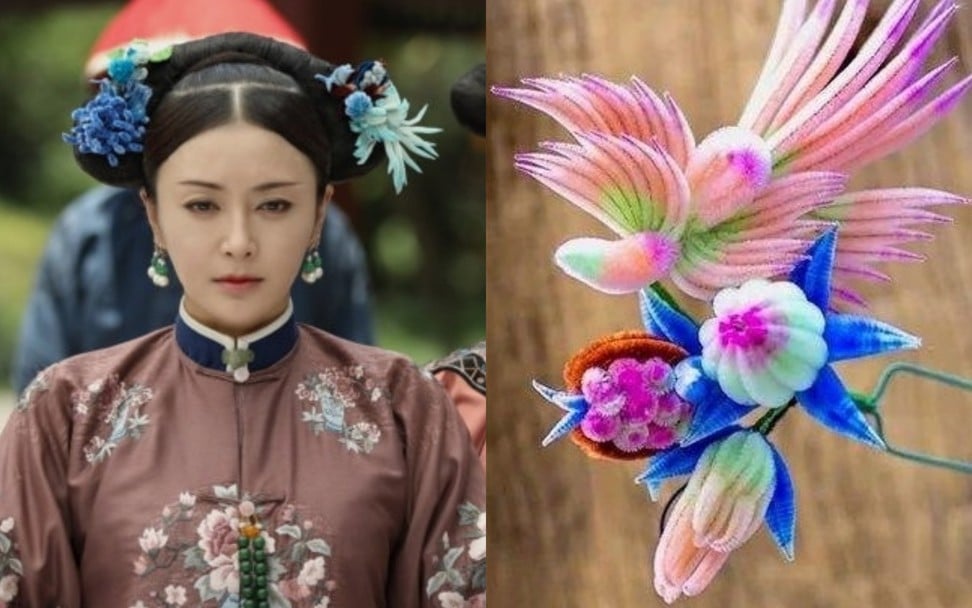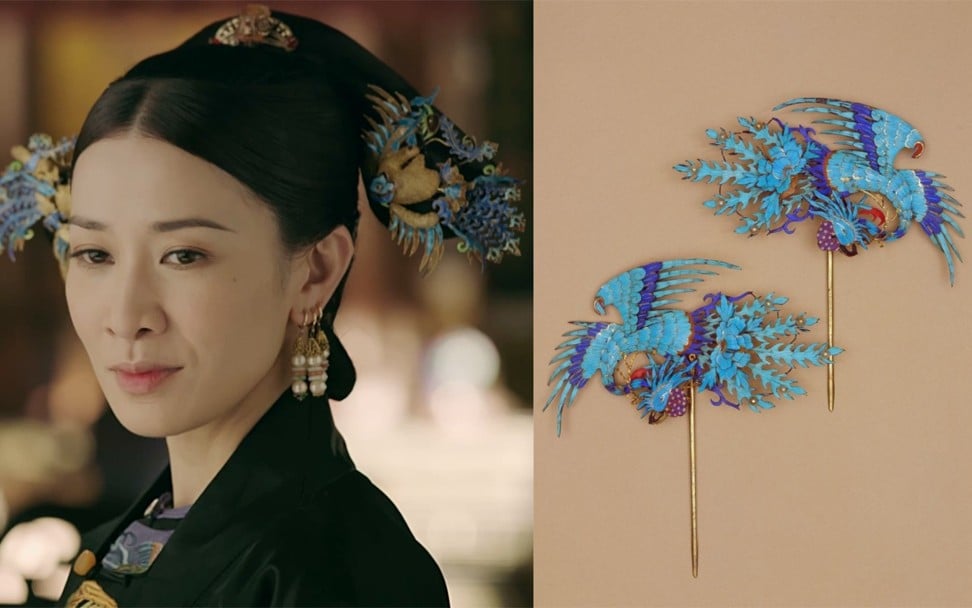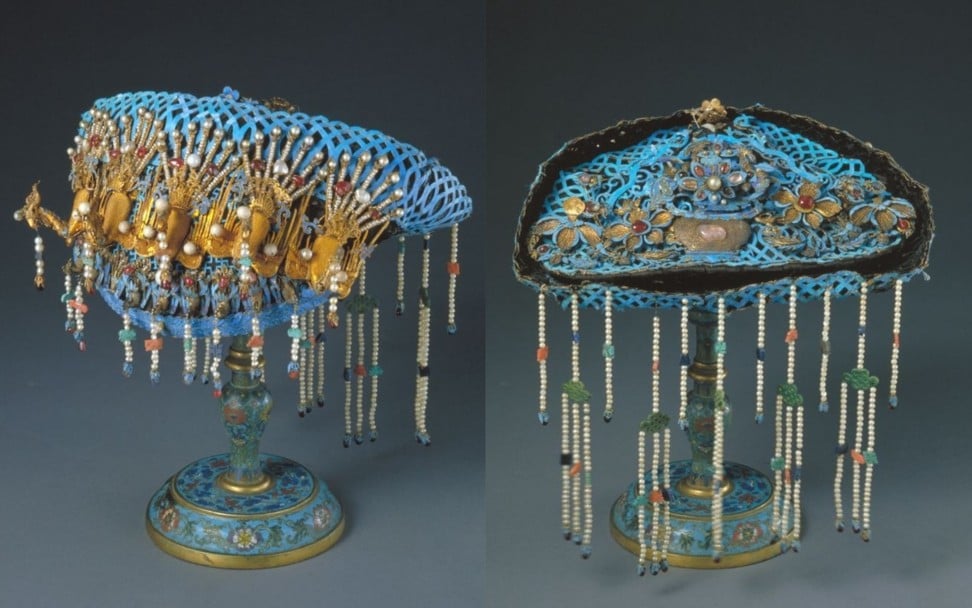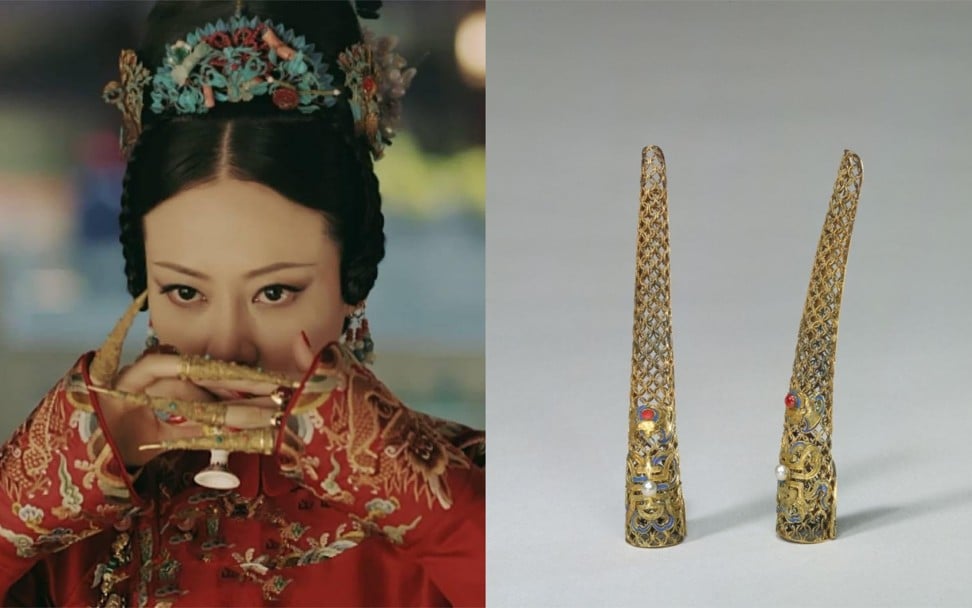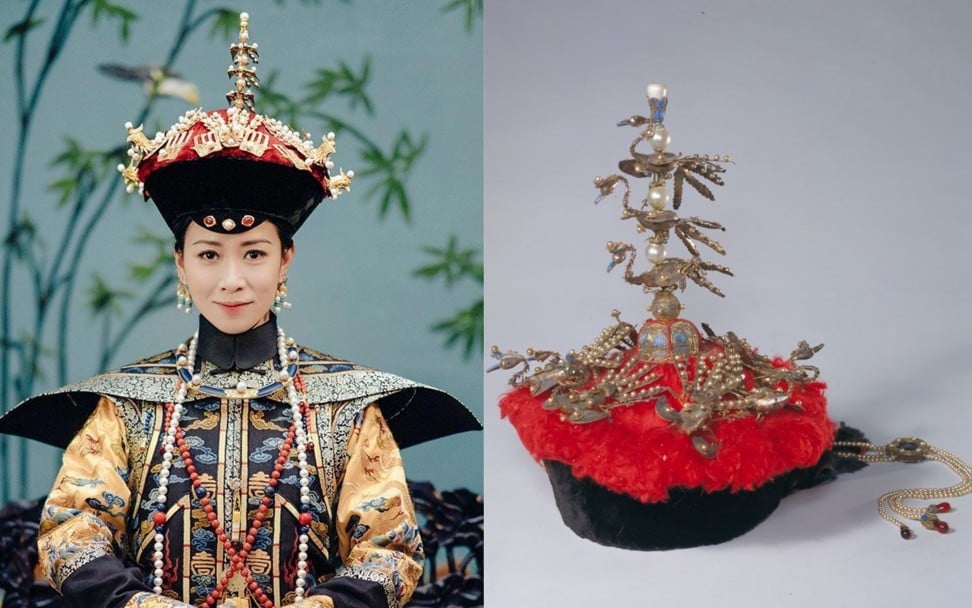
The 70-episode Qing dynasty imperial drama Story of Yanxi Palace concluded on August 27 on video platform iQiyi, garnering more than 15 billion views by its finale. Yet, in Hong Kong, the final episode will air on TVB Jade this Saturday.
The whole city is astir over the drama, from its Qing dynasty settings to the ancient Chinese make-up and the intricate costume design.
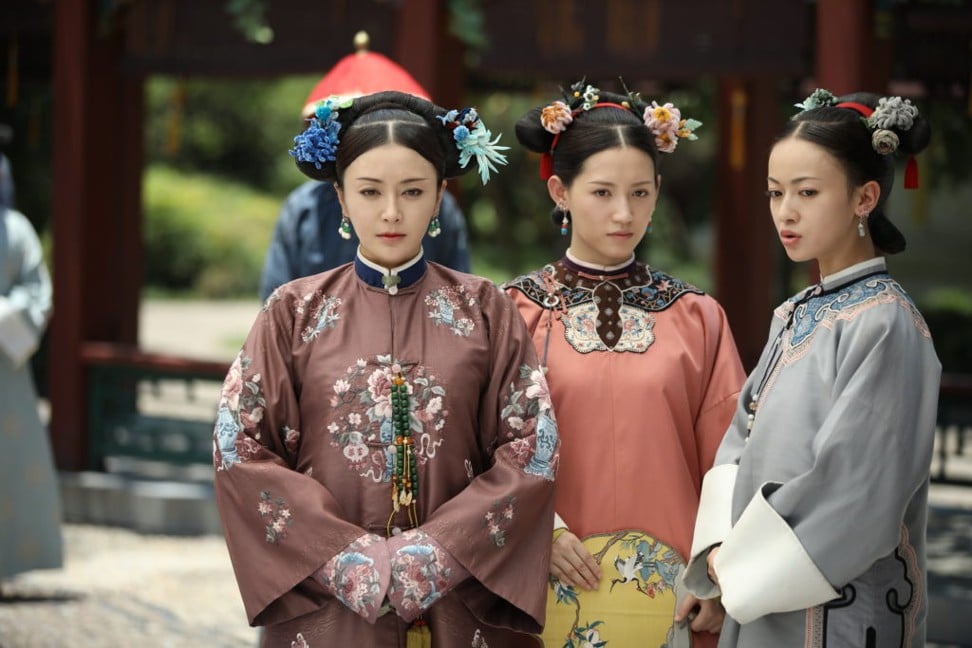
What made the drama so successful? Thanks to the high standards and meticulous research of the production team, which made the whole drama come alive and immerse its viewers, employing an array of highly authentic props and remaining true to history.
Here we take a look at the accessories of the concubines who appear in the drama, find out the origins of these items and compare some of them with authentic ones from the Palace Museum in Beijing, in order to appreciate the Chinese imperial aesthetic.
How has Chinese drama ‘Story of Yanxi Palace’ made an impact on the global fashion stage?
‘Ronghua’, the Nanjing velvet flower
The term “Ronghua” (絨花), refers to the art of making velvet flowers and animals from thin copper sticks covered with silk velvet of different colours. It was regarded as a tribute to royalty since the Tang dynasty (618-907) and became popular as a hair accessory in the imperial palace between the reigns of the Qing Emperor Kangxi (1654-1722) and the Qianlong Emperor (1711-1799).
A ronghua, or “velvet flower”, was considered a lucky charm in China because it is a homophone of “prosperity” (榮華) in Mandarin. Therefore, this kind of flower was always used as an accessory and decoration during festivals or weddings in ancient China.
In 2006, the Nanjing velvet flower was included in the Intangible Cultural Heritage List of Jiangsu Province.
“There are various styles of ronghua and it usually takes one to two days to finish one, and another one or two weeks for those complicated styles,” 65-year-old Zhao Shuxian (趙樹憲), the only person left with the full set of skills to make them, said in an interview with the Xinhuanet.com. “The production unit [of the drama Story of Yanxi Palace] ordered 19 ronghua from us and it took us more than a month to finish them all.”
Zhao added that the team asked him to make the multicolour “money tree” ronghua by copying the original collection in the Palace Museum in Beijing. The “money tree” velvet flower, which, according to Zhao, involves a complicated manufacturing process, became one of the hair accessories used by the Empress Fuca, played by Qin Lan, in the drama.
The tian-tsui hairpin
Tian-tsui (點翠), or hairpin, was the most commonly used hair accessory and was commonly worn by the empress and by consorts in the drama.
Empress Cixi’s favourite princess and what you didn’t know about her
Although tian-tsui looks like cloisonné, apparently, the technique behind it is totally different. Craftsmen made use of the kingfisher’s feathers – usually taken from the bird’s back and wings – to add colour, mainly blue, to the objet d’art and adornments.
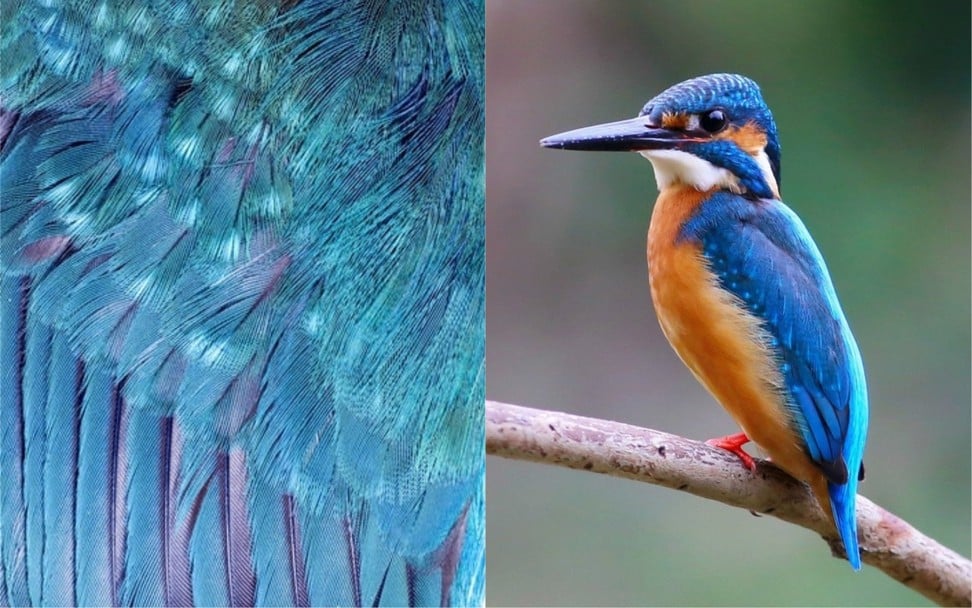
Artisans would first use flimsy metal to make the frames and golden thread, to sketch the pattern on it. When finished, feathers of the kingfisher would be inlayed into the blank areas, giving the object an electrifying hue of blue.
‘Yunjian’, the shoulder cape
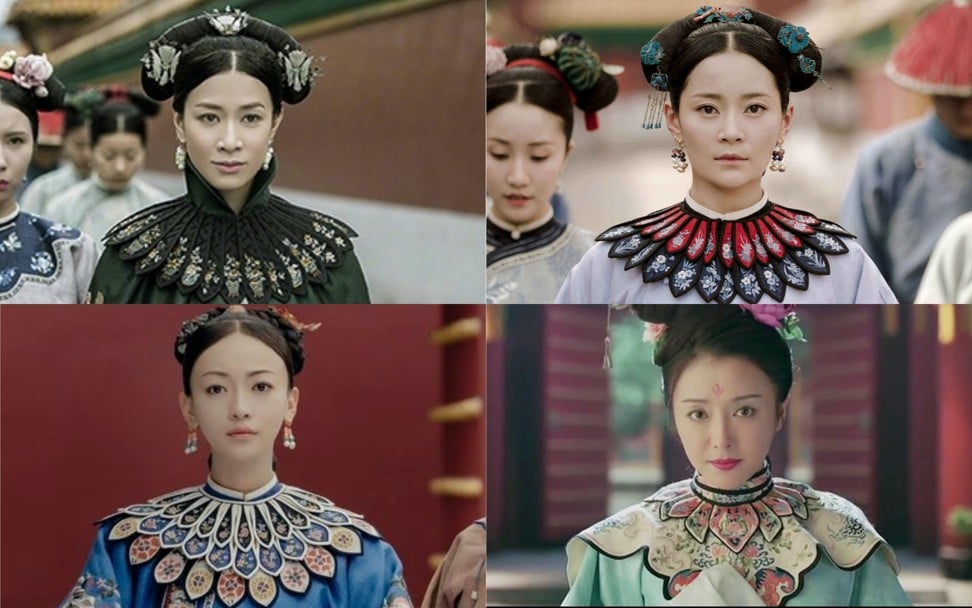
In order to protect the collar and shoulder areas of the clothes from being stained, the yunjian (雲肩), or shoulder cape, was adopted.
The yunjian is believed to have a very long history, dating back to the Sui dynasty (581-619) and was originally a Han Chinese costume.
5 Chinese dramas you need to watch in 2018
The cape, which is circular-shaped when spread out flat, resonated with the concept of “round heaven and square earth” in Chinese philosophy and was always embroidered with auspicious motifs, such as the peony, fish, bat.

During the Qing dynasty, yunjian became a symbol of the aristocracy and served as an adornment rather than protective clothing.
Despite the Empress Dowager Cixi (1835-1908) having been born more than a century after the reign of the Qianlong Emperor (1711-1799) – the period the Story of the Yanxi Palace is set in – Gao Guifei, the character portrayed in the drama, shared the same style of shoulder cape made of pearls (below). It was an avant-garde design compared with the traditional ones made with fabric.
The finger guards
From the perspective of ancient Chinese aesthetics, the longer and slimmer the fingers, the more elegant and noble the woman was. Having long fingernails was therefore a chic style trend in the Qing dynasty. To protect the fingernails, as well as making them look slender and prettier, talon-like finger coats were put on.
The woman who ‘ruled’ China: what you didn’t know about Empress Dowager Cixi
The image from the Palace Museum above shows a pair of fingernail protectors from the Qing dynasty. The pair, made out of gold, are 5.2cm in length and slightly conical in shape. The hollow design helped to aerate the fingernail guards and also made them less cumbersome. Usually, they were worn on the woman’s little and ring fingers, but sometimes on all 10 fingers.
The crown
In the drama, when the Imperial Noble Consort Xianchun (嫻皇貴妃) was granted the rank of empress, she wore an extraordinary crown during the accession ceremony.
The crown in the drama was a replica, a faithful replica of the authentic one in the Palace Museum (right image, above). The three gold phoenixes, with a pearl between each, made up a pillar of the crown, while six other gold phoenixes and one “di” – a long-tailed pheasant – lay around the red velvet bed.
This crown was a supreme one which was only used by the empress or the empress dowager during important ceremonies.
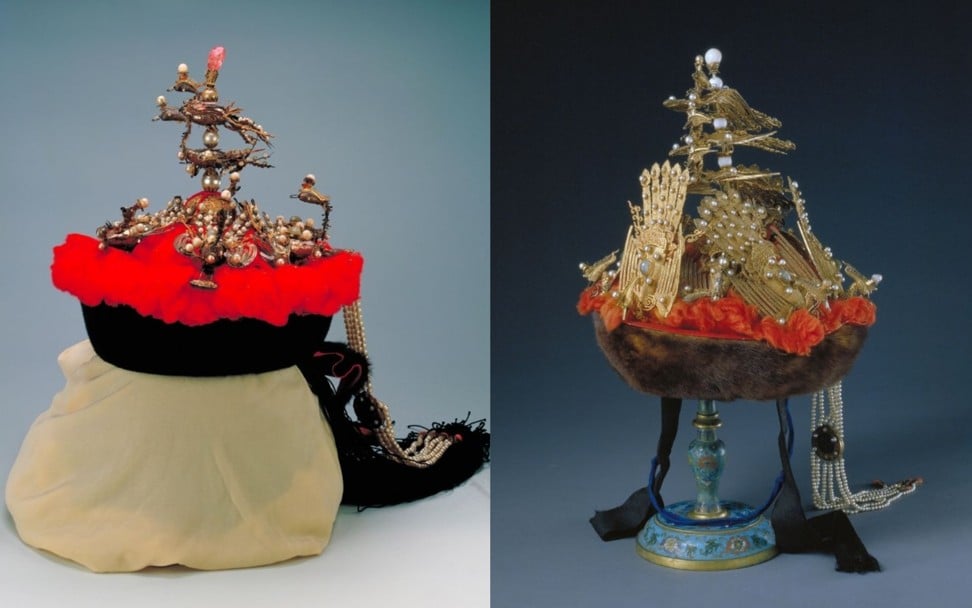
Want more stories like this? Sign up here. Follow STYLE on Facebook, Instagram and Twitter
